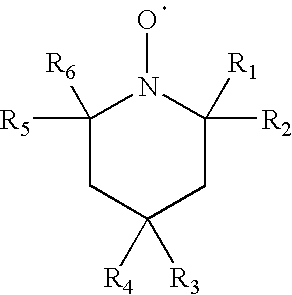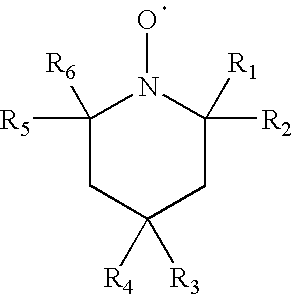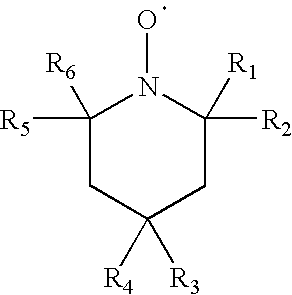Heat transferable material for improved image stability
a transferable material and heat transfer technology, applied in the field of heat transferable materials, can solve the problems of unsightly viewer, thermal, electrophotographic images, and all such images are susceptible to environmental factors, so as to reduce image production costs, reduce light fade, and reduce iridescence
- Summary
- Abstract
- Description
- Claims
- Application Information
AI Technical Summary
Benefits of technology
Problems solved by technology
Method used
Image
Examples
embodiment 1
[0083]A heat transferable donor element comprising a polymeric support, the support having at least one portion thereof coated with a heat transferable material comprising a heat transferable polymeric binder and a light stabilizer that is an N-oxyl radical that is derived from a hindered amine, the N-oxyl radical having the following formula:
[0084]
wherein R1, R2, R5, and R6 are each independently selected from a straight or branched C1-C6 alkyl or alkene, and R3 and R4 are each independently selected from H, OH, OR, COOH, or COOR, wherein R is a straight or branched C1-C6 alkyl or alkene, and having a molecular weight of 600 or less.
embodiment 2
[0085]The element of embodiment 1 comprising at least one protective overcoat patch.
embodiment 3
[0086]The element of embodiment 1 or 2 wherein the N-oxyl radical light stabilizer is:
[0087]
PUM
| Property | Measurement | Unit |
|---|---|---|
| temperatures | aaaaa | aaaaa |
| wavelength | aaaaa | aaaaa |
| wavelength | aaaaa | aaaaa |
Abstract
Description
Claims
Application Information
 Login to View More
Login to View More - R&D
- Intellectual Property
- Life Sciences
- Materials
- Tech Scout
- Unparalleled Data Quality
- Higher Quality Content
- 60% Fewer Hallucinations
Browse by: Latest US Patents, China's latest patents, Technical Efficacy Thesaurus, Application Domain, Technology Topic, Popular Technical Reports.
© 2025 PatSnap. All rights reserved.Legal|Privacy policy|Modern Slavery Act Transparency Statement|Sitemap|About US| Contact US: help@patsnap.com



